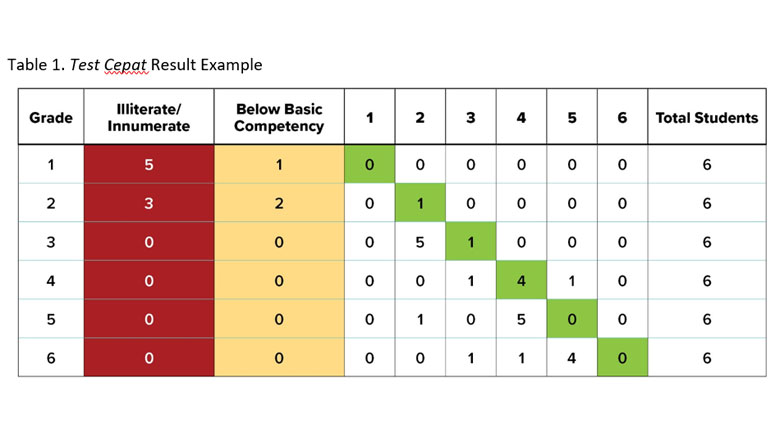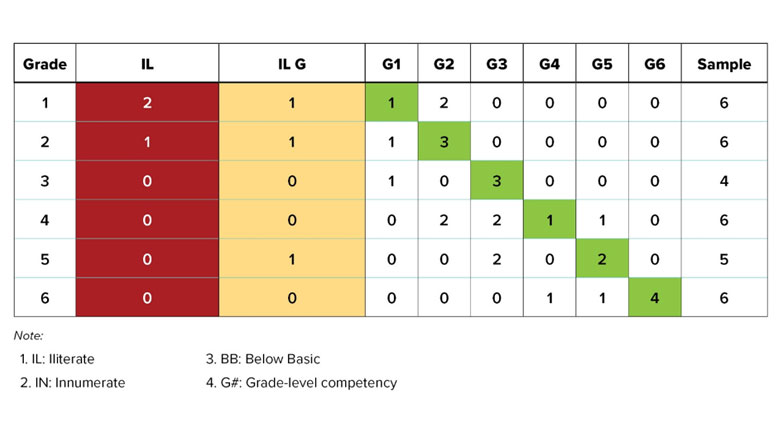A World Bank survey found that learning outcomes of students in remote primary schools are two grade levels behind the curriculum targets in five disadvantaged districts of Sintang, Landak, Ketapang, West Manggarai, and East Manggarai.
Since 2016, the World Bank has supported the government to pilot KIAT Guru, which empowers communities and ties the allowances of teachers in remote area with their performance. After one year of implementation, an impact evaluation found that KIAT Guru significantly improved learning outcomes compared to non-KIAT Guru schools.
As existing learning assessments could not be used to identify where remote primary school students are along the learning continuum, KIAT Guru produced two assessment tools: Student Learning Assessment and Tes Cepat, or Quick Test.
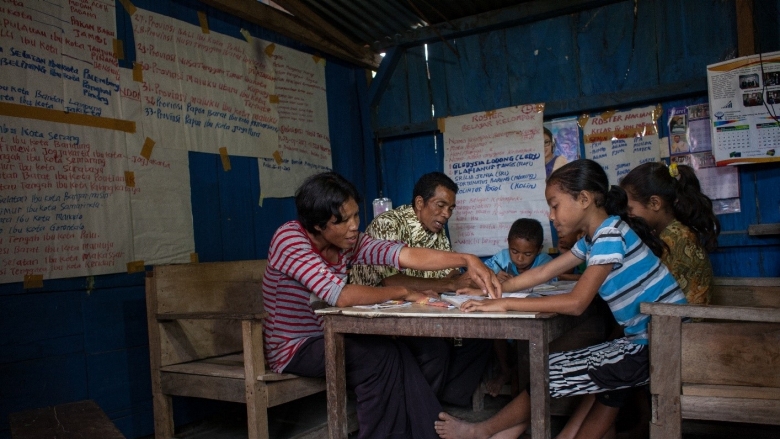
Student Learning Assessment (SLA)
- Building upon Indonesia’s 2006 national curriculum and international assessment frameworks (TIMSS and PIRLS), the SLA is designed to measure reading and math learning outcomes of primary grade student in Indonesia’s remote areas.
- SLA differs from its predecessors in Indonesia (EGRA, BERMUTU, and INAP), as it covers all primary grade reading and math, and is tailored to measure learning in remote area contexts of disadvantaged regions. It also covers more cognitive aspects, which allows the tool to detect granular changes in students’ knowledge of concepts, ability to apply knowledge to a certain context, and reasoning to critically consider solutions to a problem.
- The SLA has been piloted and tested with 64,565 students in 324 remote primary schools across eight Indonesian provinces. The pilot testing of SLA covered remote schools in advantaged and disadvantaged districts. Figure 1 shows results of the piloting in grade 1 level, where the distribution of reading results for students in KIAT Guru’s 270 remote schools spread more evenly across the ability range. However, the student test results from remote schools of Yogyakarta, which is an advantaged region, fell within the mid- to- high ability range, deeming the test to be easier for them relative to students in KIAT Guru’s schools. This trend also applies to grade 1 students in math, as portrayed in Figure 2, and in the rest of the grade levels.
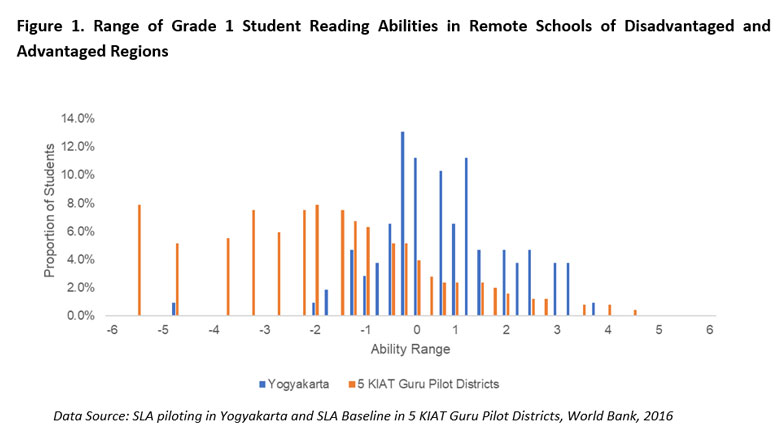
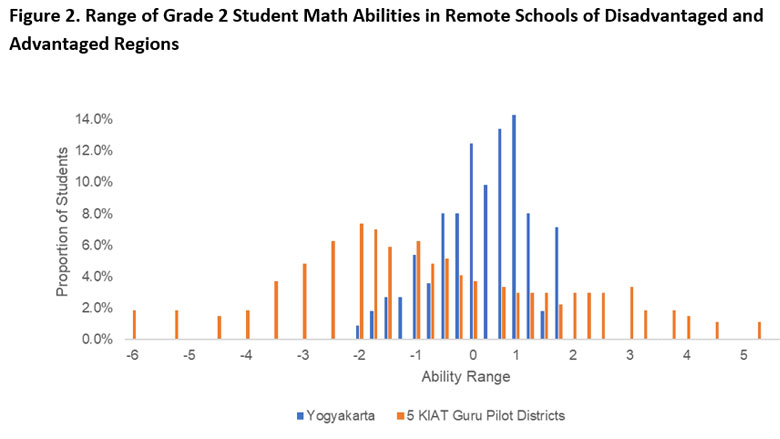
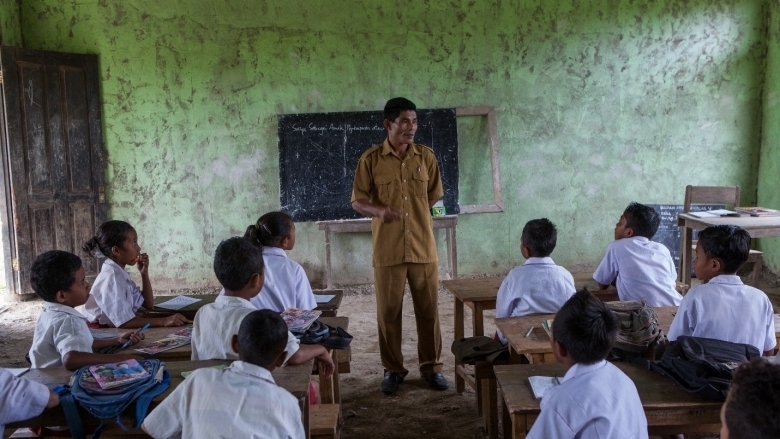
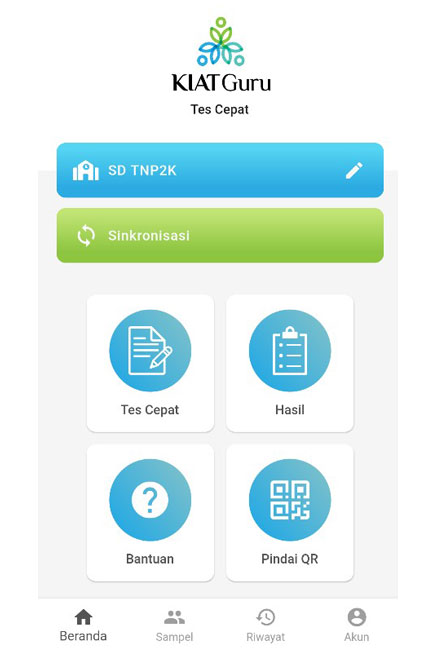 Tes Cepat
Tes Cepat